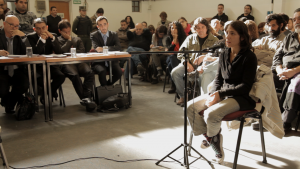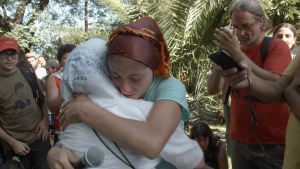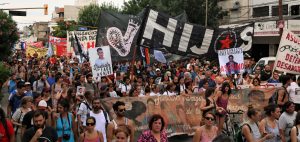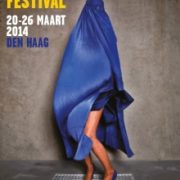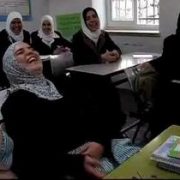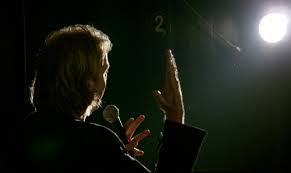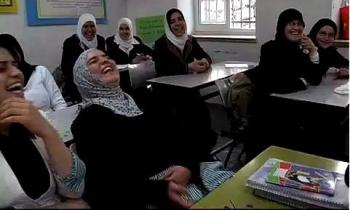Acting Together on the World Stage (the documentary and toolkit) – Review
In 2011, Theatre Without Borders and Brandeis university’s programme in Peacebuilding and the Arts created an Acting Together on the World Stage: Performance and the Creative Transformation of Conflict documentary and toolkit. Combined with a two-volume anthology (which will not be reviewed here), the documentary and the toolkit form part of a project which aims to document the performances and artists who combine art and peacebuilding and help people to organize their own peacebuilding performances. As Creating Rights is also working on these issues I thought it might be worth it to check it out and so I decided to buy the documentary and toolkit.
I first started with the documentary, which seemed natural as it was disk 1. The documentary is a combination of interviews of nine artists from seven different countries: Argentina, Serbia, Uganda, Peru, USA, Cambodia, Australia (there are three additional interviews of artists from the Netherlands, Israel and Palestine in the toolkit). All of those artists try to combine peacebuilding and artistic performances. It is explained that Acting Together decided not to use the term “theatre” as it would exclude traditional rituals, and opted for the term “performance”.
Interestingly the documentary is divided into three acts: Resistance, Rehumanization and Reconciliation. I have to admit that, as I am quite new to this field of combining peacebuilding and arts, I enjoyed that the documentary was organized like that. It was easier to grasp how, concretely, artistic performances could help peacebuilding: they could help by resisting, rehumanizing or reconciliation. In order for the reader to better understand the link between these acts and art and peacebuilding, I will give the following examples from the documentary.
Act I – Resistance. It was a coincidence that the Dah Theatre was created in Belgrade where the ex-Yugoslavian war started. But when Dijana Milošević, the founder of the Dah Theatre, noticed that the Serbian government was waging war “in the name of the citizens” she, as a Serbian, felt guilty and decided to perform politically engaged plays. For example she expressed her disagreement with the regime in her play The Story of Tea which campaigned against the persecution of the Muslim population by the Serbian authorities.
Act II – Rehumanization. Ana Correa, a Peruvian actress of indigenous origins never had long hair, the indigenous way, until she had to perform as a peasant in a play staged in communities recovering from war. Since she had short hair, she had to wear fake braids. She decided to grow her hair long, for the play. When she did, her grandmother braided her hair the indigenous way. Correa explains that, in this way, theatre helped her reconnect with and reconstruct her identity.
Act III – Reconciliation. After the Peruvian civil war, a Truth and Reconciliation Commission was created. The Commission asked the Yuyachkani theatre group to go in rural villages to prepare the population to share their painful testimonies. Yuyachkani decided to perform rituals and short plays on the plazas of those small villages. Augusto Casafranca recounts how, at the end of one performance, the audience did not leave. Spontaneously, he started handing out to the spectators flowers that had been covering a fake grave he used during his play. He recalls how everyone started queuing to get those flowers, and then candles, when he did not have any more flowers, and then leaves. Casafranca explains that the audience saw it as a symbol, as a symbol of mutual reconciliation.
Whether the performance is aimed at resisting, rehumanizing or reconciliation, those performances “have the kind of consequences that mean the audience comes backstage and talks about what they just saw” says Ugandan Charles Mulekwa. Iman Aoun adds that such performances can give a platform to discuss issues that are normally discussed and can even push people to act. After one of her plays in Palestine, a woman whose marriage had been arranged when she was 14, called on the audience to help her own granddaughter whose marriage was currently being arranged. The woman explained that if the audience did not react to her call for help, they would act as if they hadn’t seen the play. As importantly, those performances also enables the audience to cry said a spectator after Catherine Filloux’s play about S-21, an old Khmer Rouge detention centre.
In comparison to the documentary, I find the toolkit of disk 2 more practical. In addition to more videos, which are very much alike to the documentary, the toolkit has a number of PDF documents to help people approach peacebuilding performances. I say “approach” because the documents do not only help one organize such an event but also give advice to policymakers or funders on how to view a peacebuilding performance. To do so, the toolkit offers us a list of questions and recommendations (there are different lists for the different people who would be interested in a peacebuilding performance: artists, peacebuilding practitioners, students and teachers in conflict studies or in art, policy makers, funders and, of course, the audience).
To give a concrete example, the toolkit contains a document called Minimising Risks of Doing Harm. The document sets out recommendations on how to prevent retraumatization, but also on how to keep the artists safe when they could be victims of government repression or paramilitary violence. I found it great that such a document existed in the toolkit because, in the documentary Augusto Casafranca explains that he had to reflect on how important, yet dangerous, his work was. In one of his performances he used firecrackers. When the firecrackers started making noise the audience became afraid because it reminded them of the sound of war. Hopefully, he says, they came back and did enjoy the play but it could have been a possible retraumatization situation for the audience. I therefore appreciate that the toolkit addressed this issue which was raised as a possible problem in the documentary. For me, this shows how complementary the toolkit is to the documentary: the documentary allowed me to have a good overview of what “peacebuilding performances” really meant, and the toolkit helped me understand how we should approach those performances and to what we should pay attention.
To conclude, as a newbie in the field of peacebuilding and arts, I thought Acting Together was very interesting and instructive as it covered a range of themes, issues and links between artistic performances and peacebuilding. However, I was disappointed that we didn’t have access to the full performances but were only able to see small fragments of them during the interviews. The fragments we were able to see acted as trailers and made me curious to see the whole performances.


